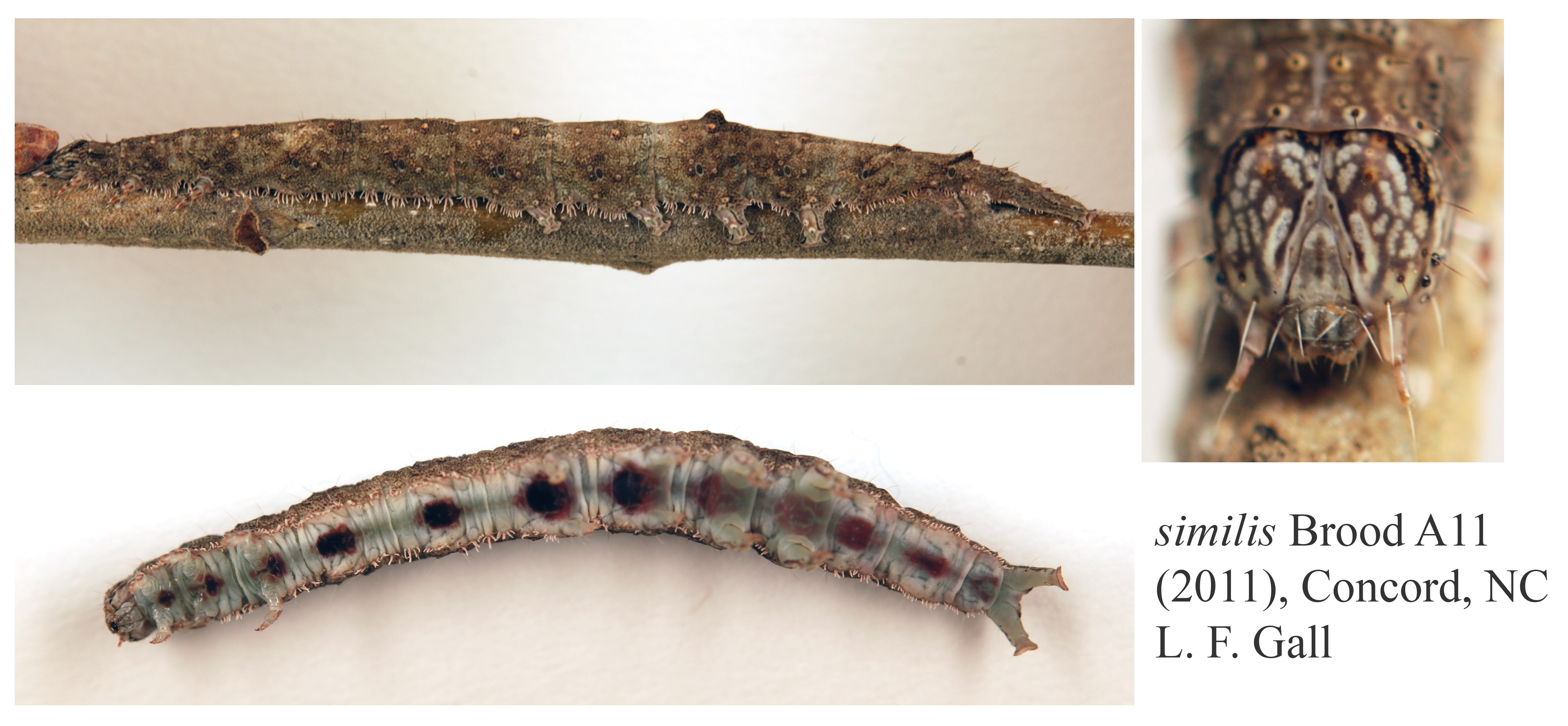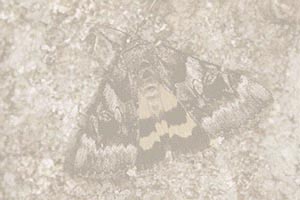 Catocala similis
Catocala similis
W. H. Edwards, 1864
A commonly encountered small oak-feeding Catocala species as a larva. Close to
micronympha,
but similis is usually a bit browner in ground color, less maculated overall, and with the A5 saddle patch
just darkened and subdued (not contrasting). The A5 hump/tubercle in similis generally lacks prominent white and
is often somewhat more conical
in shape viewed laterally. The head capsule of similis has little to no white chevron on the face near the
vertex, compared to micronympha.
Body size and coloration of
minuta can approach similis, but
head capsule of minuta lacking white chevrons and with substantial darkening behind the vertex toward T1 and
two prominent dark dots on facial lobes.
In at least the northeastern portion of its geographic range, similis is a typical
denizen of pine barrens, hilltops and other xeric habitats, and hence the greater frequency of records on Quercus ilicifolia.



|


